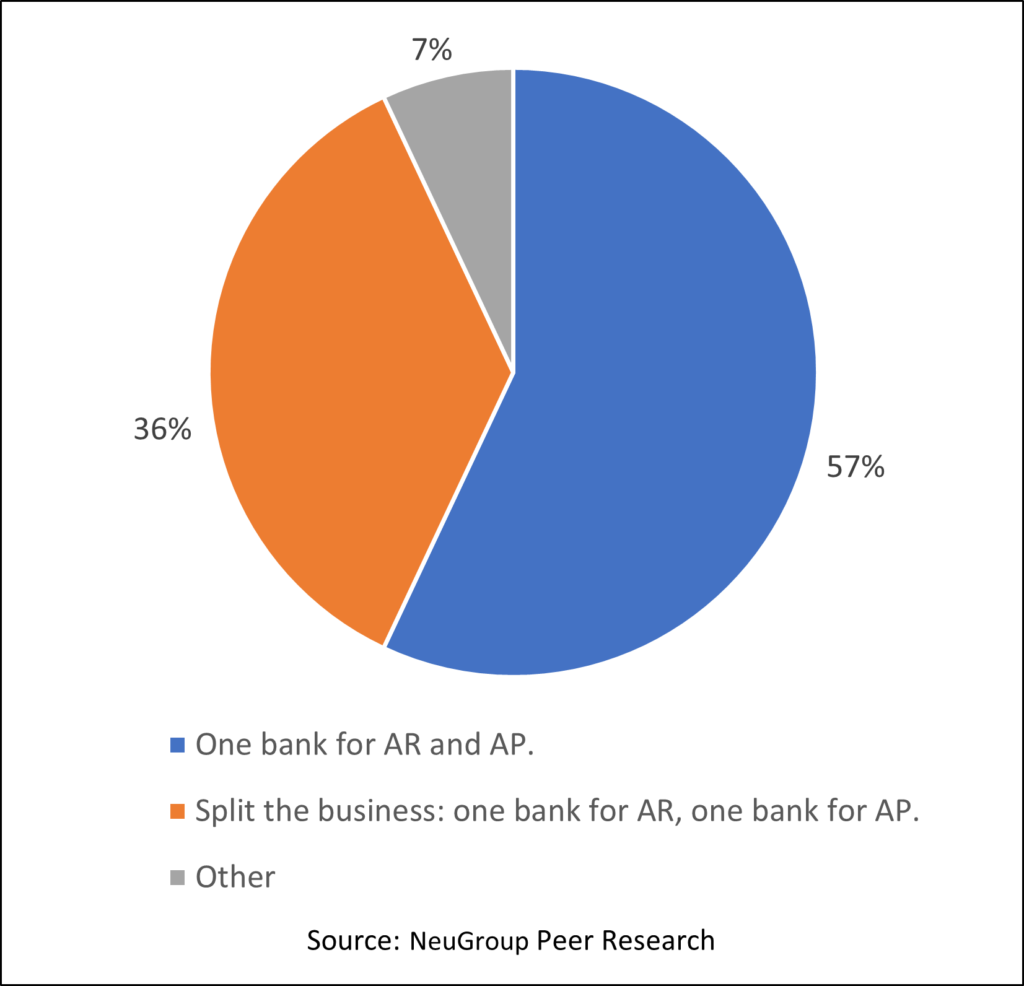
Member question: “In the US, do you have one banking partner for AR and AP, or do you split the business, with one bank for AR and a separate bank for AP?
- “For those that split the business, is this a share of wallet decision or an operational decision? Are there any operational pain points associated with having two banking partners?”
Peer survey results: The majority of survey respondents use a single bank, with about one-third splitting the business.

Peer answer 1: “We have historically had two AR banks (two different business units), and one of those was different than our AP bank. Recently, we awarded the other AR business to the same bank and now we are fully concentrated.
- “This was more due to the other bank leaving the AR space. From a share of wallet perspective, it has created an issue for us where we are too concentrated with one bank relative to the credit participation.”
Peer answer 2: “We currently have our US AR and AP with the same bank, but we are in the middle of an RFP for the US AP business. The share of wallet is an important factor for us, but technological capabilities of the bank (e.g., supporting POBO) is an even larger factor in the RFP.”
Peer answer 3: “We use one US AR/AP banking partner. We actually had one banking partner for our global cash management operations, but transitioned to a regional strategy through an RFP about five years ago.”
Peer answer 4: “In the US, we split the business, one bank for AR and one for AP. This was driven by a share of wallet decision but also a risk diversification and business continuity decision, which has proven to be helpful for us.”
- Response to another peer’s question: “[There are] no manual transfers [between AR and AP], everything’s automated. Frankly, there are so many ways to do so—you just need to be creative and ask your bank the right questions.”


